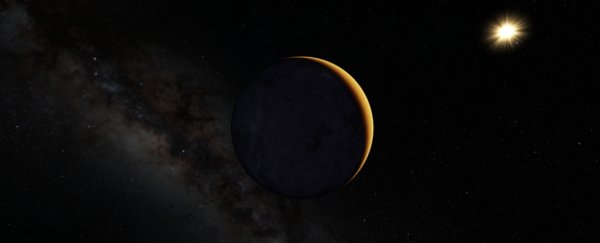The putative detection of phosphine gas in the atmosphere of Venus raised the fascinating question of whether it could be of biological origin.
Given how inhospitable Venus appears to be to life as we know it, the question raised a furor. But scientists have now determined that the hellacious planet could indeed be habitable after all – aloft in the clouds, high above the scorching surface.
Specifically, the level of solar irradiation at specific altitudes is comparable to solar irradiation on Earth, meaning that airborne photosynthesizing microbes could conceivably survive at those altitudes. Moreover, the thick cloud layer would provide some protection against harmful ultraviolet radiation, and it's possible that the acidity in those clouds is less than predicted and within acceptable parameters for life.
"Together," the researchers wrote in their paper, "these photophysical and chemical considerations support a potential for phototrophy in Venus' clouds."
When it comes to habitability, Venus looks pretty unlikely. Conditions on the surface really are hellish. The planet is completely shrouded in a thick atmosphere made up almost entirely of carbon dioxide that rotates 60 times faster than the planet itself, producing insane winds.
The sky is filled with thick clouds of sulfuric acid, and its atmospheric pressure at 0 altitude is almost 100 times greater than Earth's. If that weren't bad enough, it's lander-meltingly hot, with an average surface temperature of 471 degrees Celsius (880 degrees Fahrenheit).
So when astronomers announced that they had detected phosphine gas in the planet's atmosphere last year, controversy ensued. That's because one of the explanations for its presence could be microorganisms.
Phosphine can be found here on Earth in very limited contexts, one of which is anaerobic, or low oxygen, ecosystems. It's found in swamps and sludges, where anaerobic microbes thrive; it's found in intestines and intestinal gas. Somehow, anaerobic microorganisms produce phosphine, and the clouds of Venus are anaerobic.
A biological origin is not the only explanation – a volcanic origin is also possible – but in order to assess the feasibility of a biological origin in the first place, a proper analysis of the habitability of Venus definitely wouldn't go astray.
So, led by biochemist Rakesh Mogul of California State Polytechnic University, Pomona, a team of scientists set about conducting one. First, they examined the level of sunlight that can penetrate Venus's clouds. We have data from Russia's Venus expedition between 1967 and 1983; none of their probes survived long on the surface, but they did send back measurements they took of the clouds during their descents.
From these and other historic measurements, the researchers were able to calculate the light levels within the clouds, and determined that irradiances in Venus's middle and lower clouds are similar to those at Earth's surface, where photosynthetic life is abundant.
But light levels alone are insufficient. A study earlier this year found that there is simply not enough water activity in Venus' clouds to support life as we know it. But that might not be the case if the composition of Venus' clouds is not what we think it is. Current estimates place the concentration of sulfuric acid at 75 percent for the middle clouds and 98 percent for the lower clouds.
Mogul and his team revisited Venus data and determined that the signatures indicating sulfuric acid could also be caused by neutralized forms of sulfuric acid, like ammonium bisulfate. If this is the case, then there could be significantly more water activity – and significantly less acidity – in Venus' clouds than previous estimates suggest.
This is not to say that this is the case. The research is intended to establish that this is simply possible – which, in turn, opens pathways avenues for future research, including more detailed analysis of the Venusian atmosphere, to determine habitability.
"Our study provides tangible support for the potential for phototrophy and/or chemotrophy by microorganisms in Venus's clouds," Mogul said.
"The acidity and water activity levels potentially fall within an acceptable range for microbial growth on Earth, while the constant illumination with limited UV suggests that Venus's clouds could be hospitable for life. We believe that Venus's clouds would make a great target for habitability or life detection missions, like those currently planned for Mars and Europa."
The research has been published in Astrobiology.
